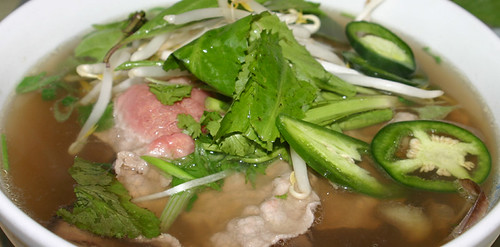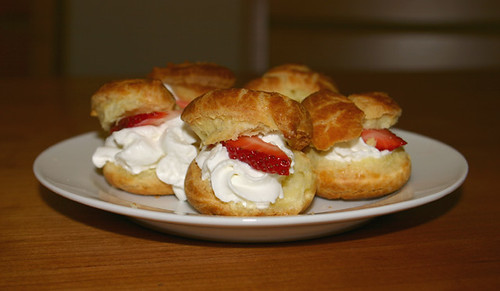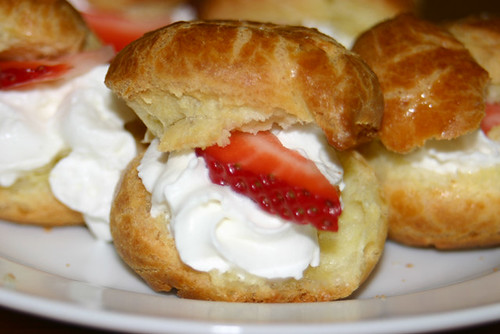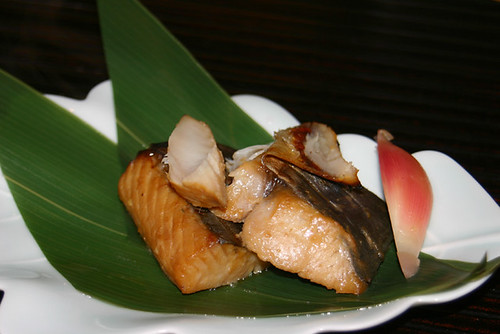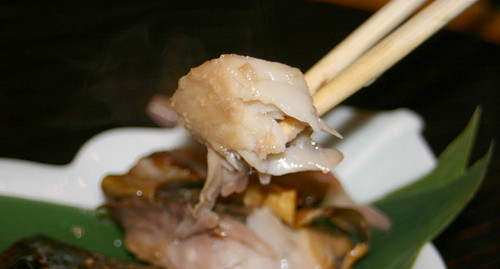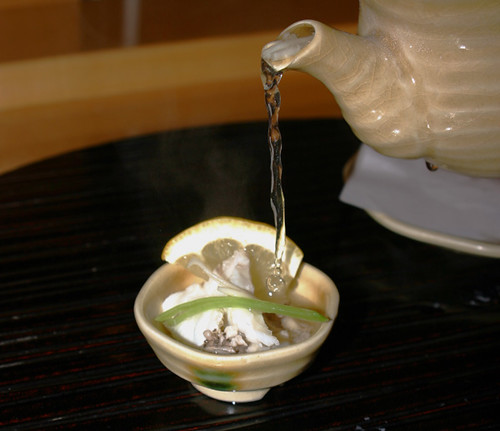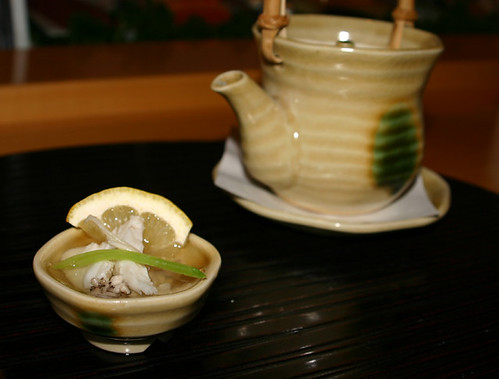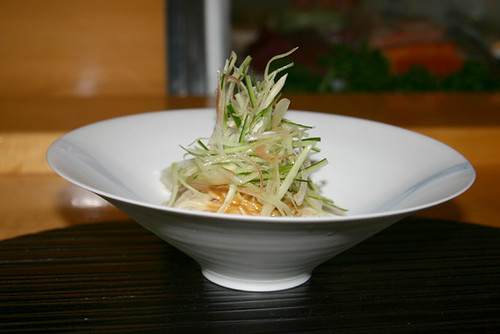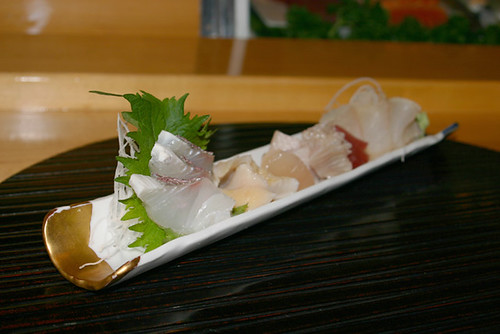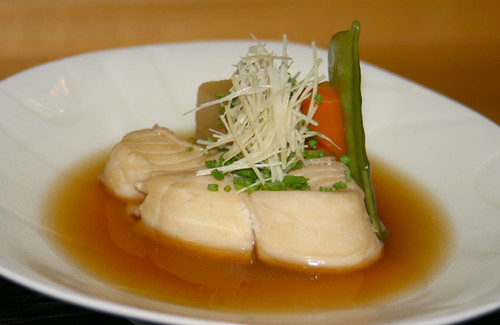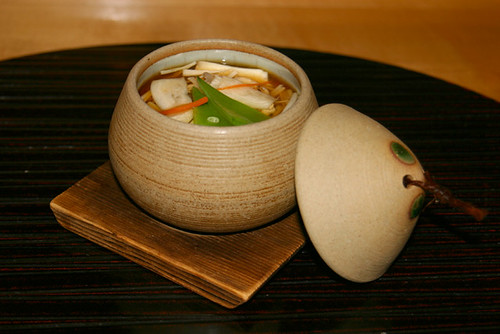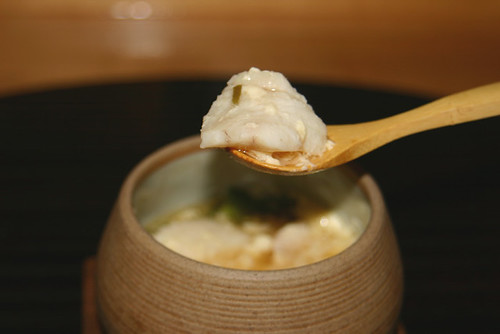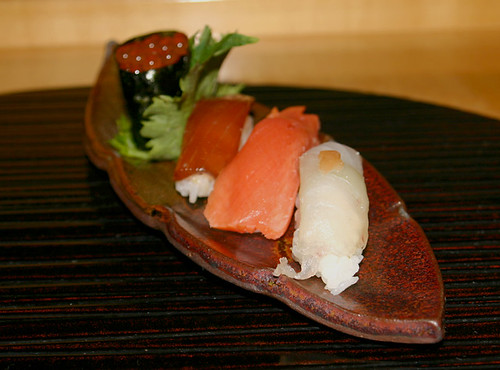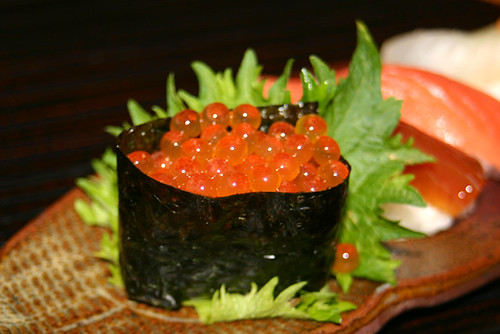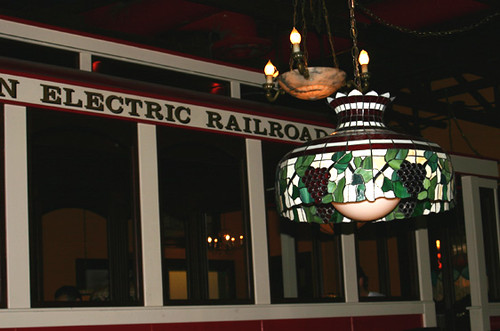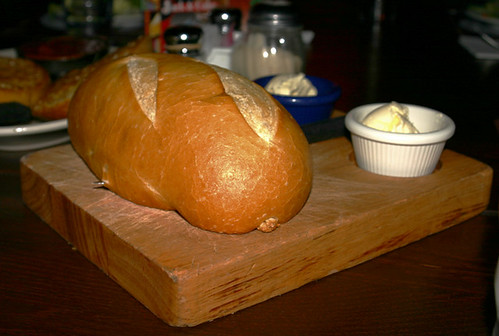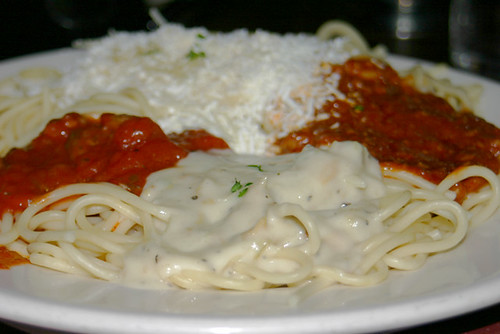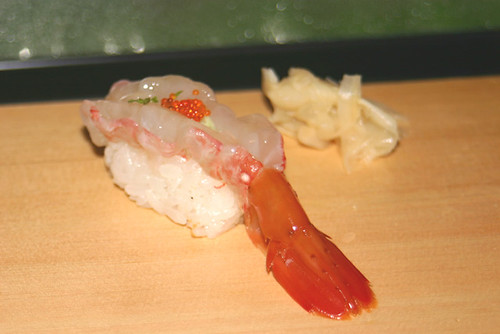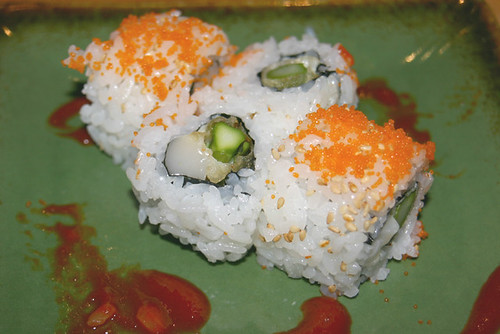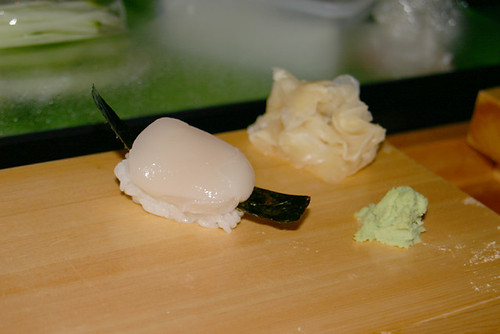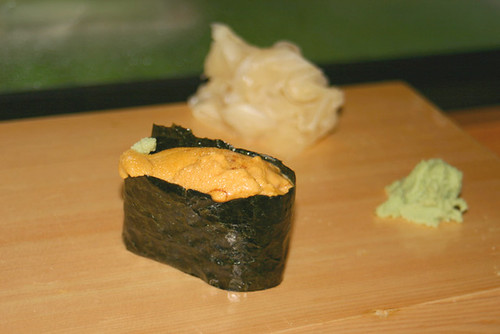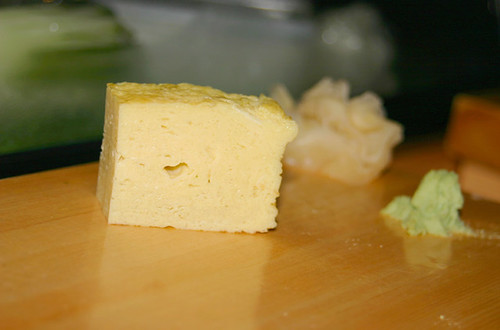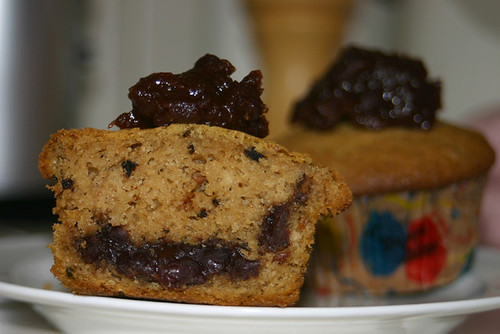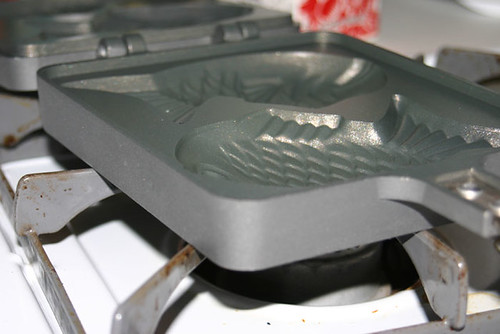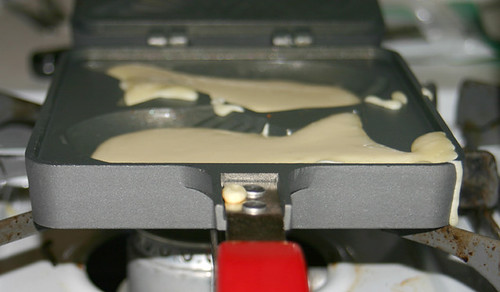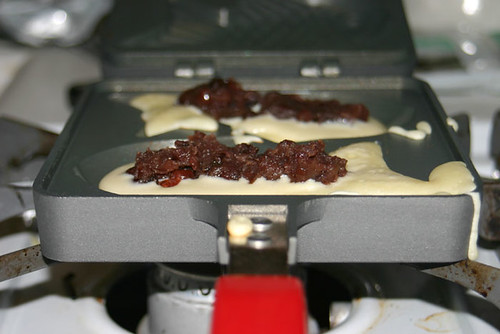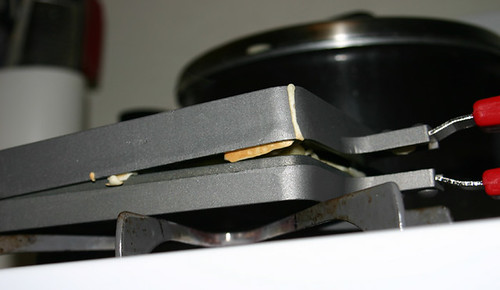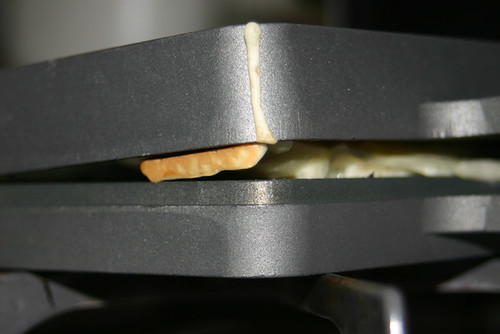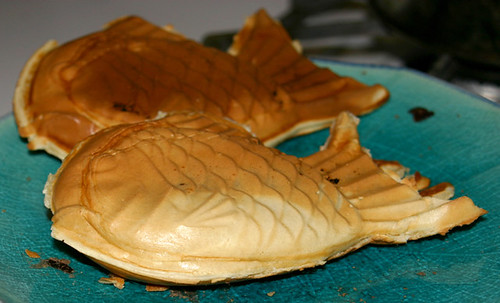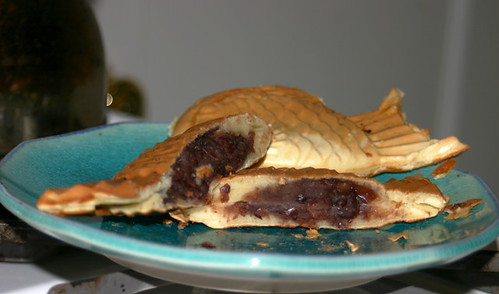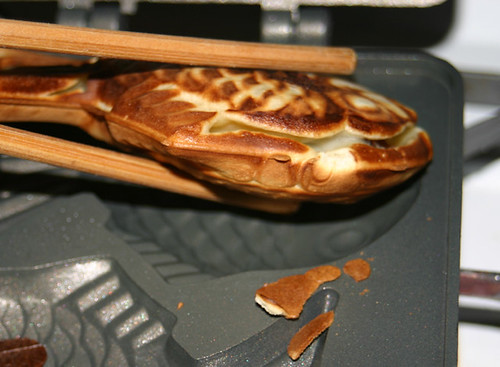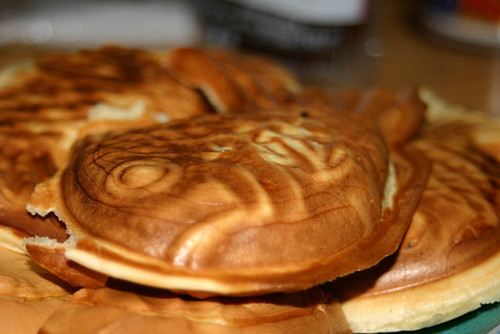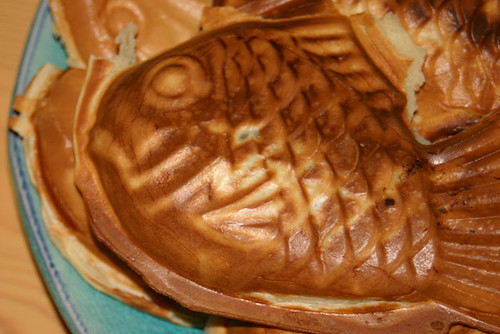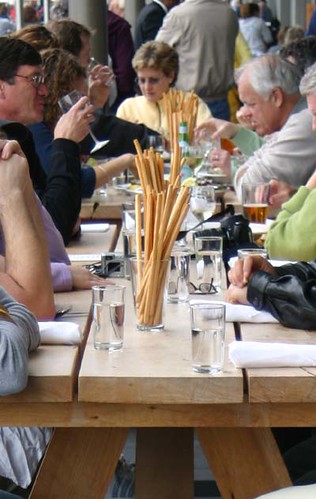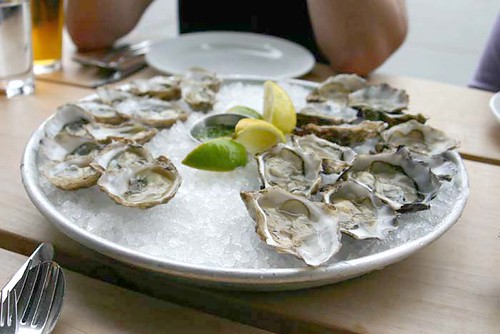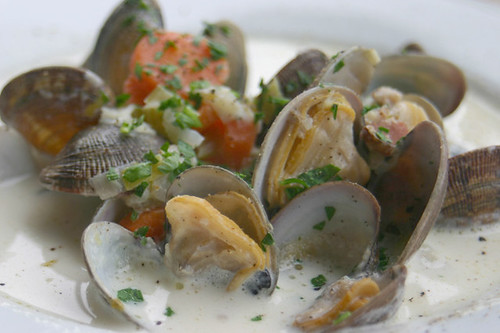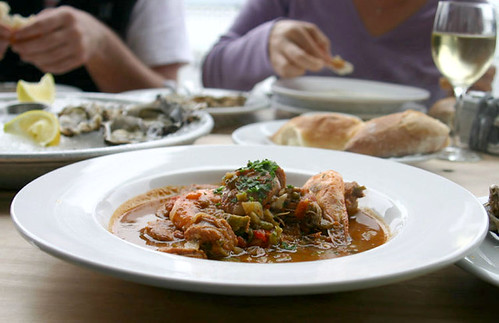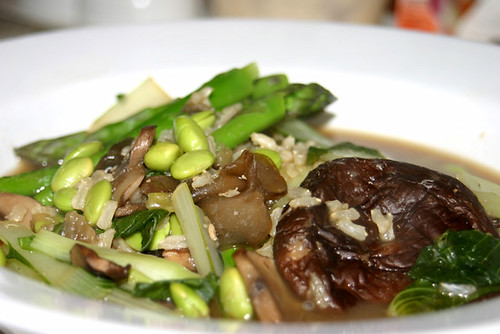I've been doing too much restaurant review-ish kind of work lately, so I've decided to stay away from writing about more places to eat this weekend. Instead, I'll muse about why I blog and enjoy food photography, and share some of my new food photos with a little blurb, which is something I have chosen not to do too much of until now.
Where should I start? I stumbled onto the world of food blogs via
Chowhound. Some of my favorite 'hounds had links to their blogs along with their posts, and I started reading through them. Many of them had beautiful pictures, and it brought back memories of my earlier days as a photo-journalist-in-training for a weekly online publication in college.
I'd gotten into photography because of my sister. As with all little sisters, I emulated my sister a lot and wanted to do all the cool things she did. When I was in grade school, she was in high school, doing the photography-thing. She had a nice Canon SLR, and boy, did I want one too! So, when I became old enough to save enough allowances, Xmas, New Years (Japanese tradition), and birthday gifts, I got my very own Canon SLR. It was called the EOS Kiss in Japan, which Canon named EOS Rebel when they brought it to the US. It's sort of interesting how the camera has a very 'cute' name in Japan and a very 'strong' name in the US... I wonder what the marketing strategies are behind that change...
Anyway, I started with the EOS Kiss, eventually upgrading to the EOS 100, also named differently in the US (no ideas on that one). I enjoyed taking pictures of various events, people, things, but never really had a theme. I dabbed with color some, but never got much beyond the typical high-school obsession with black and white photography... Then, came the digital photo age. I, being Japanese, love gadgets, and I upgraded my film SLR to a digital SLR, only to find myself not doing much with my digital SLR. All my lenses for the film camera work with my digital camera, and I had no excuse not to go out there and be creative with my photography. The problem was my lack of a "theme" - that drive to explore - that curiosity to look at life through the view finder for a more careful look at the world of colors, angles, and all sort of other visual stimulation...
My camera sat idle for a while, waiting for me to feel the love. And then, it happened. I went to Paris. My desire to capture the beautiful medley of colors was re-ignited. I was challenged and stimulated by the dishes I encountered in Paris. They smelled and tasted so good, but the peak of their performance was short-lived. Food, especially those culinary treasures we as a species have cultivated, have a relatively short window of time when it is best. Cold foods need to be consumed while cold, and hot food need to be consumed while hot. Even salads need to be eaten before the dressing unnecessarily wilts them! And the window for food photography is even shorter... I refuse to become so consumed with the photography aspect to neglect the food and miss its peak performance. Besides, food is most photogenic during that peak period... What a challenging and exciting art!
I blog to chronicle my experiences and discoveries with food, but the driving force behind my blog is my joy for food photography. I don't want my pictures to be simple snap shots of what I ate. I want my pictures to speak for themselves on how the object depicted stimulated me. I want them to recreate the sensation I felt when I encountered what you see in the photographs. And my words are here only to play a supporting role in that experience... So far, I've chosen not to directly describe the pictures in too much detail in my posts, since I wanted you to have an un-biased opinion/impression, but today, I'm trying something different...
So, with that, here are some recent shots from
Yuzu in San Mateo...
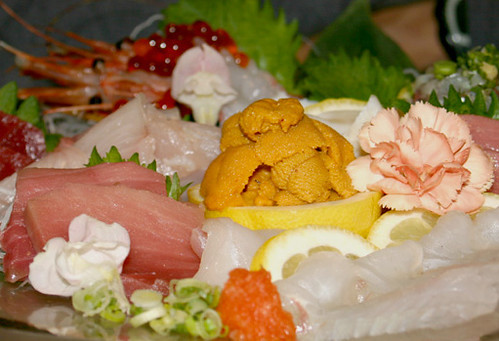
When I go to Yuzu, I always start with a sashimi platter. I find a meal with only sushi to be too filling to try the variety I'd like, so I get a sashimi platter with Chef Arima-san's recommendations. You see here a wide selection of seafood choices, including toro (fatty tuna), amaebi (sweet shrimp: raw shrimp), ikura (salmon roe), uni (sea urchin),
kampachi (which is not the same as
hamachi, as some websites will try to tell you... Even if you can't read the Japanese, you can see that these are two different fish from the pictures and the fact that they have different species names), tai, etc, etc. Although sashimi has a wider window of time for me to tinker with the pictures, the lack of a center piece/focus point, makes it hard for me to decide what I want to say through my sashimi pictures. This first one is about the luxury of choices.
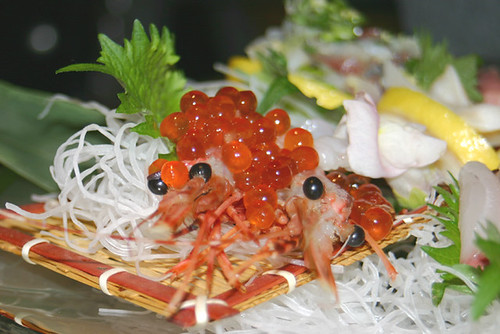
This second one is because I love ikura and these amaebi were particularly good that evening. This is more of an artistic food photo than a communicative food photo. I just thought the colors of the ikura, the shrimp, the daikon
tsuma, and the shiso leaves were too gorgeous to not capture.
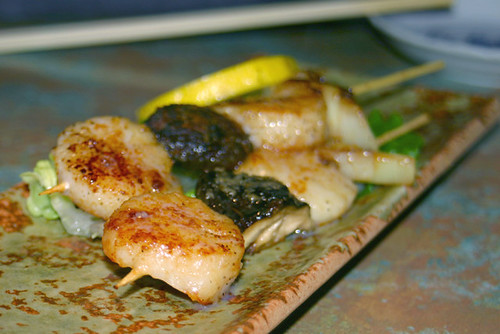
Then, here, we have the extra-succulent, tender sea scallop skewers. It had a layer of garlic paste and a nice grilled flavor to it. The fresh shiitake had the same texture as the scallops and they were luscious together. The sourness of the lemon put the various flavors right in focus, while also adding a splash of color to this picture.
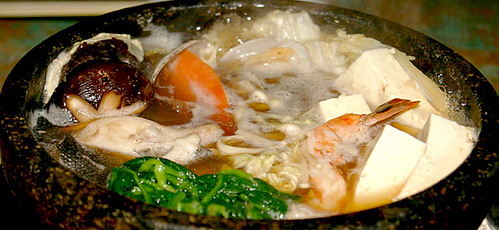
Here, we have the sizzling seafood hot pot in a bimbinbap bowl. These Korean bowls retain heat extremely well, allowing for the soup to stay hot the entire time. Although this dish has a lot of tasty seafood, the true star is the broth, which contains the various essence of all the ingridients in it. I could've dug out the ingridients more for the photo, but I captured the soup as it was presented to me - the soup sizzling and starring in the photo as the main character.
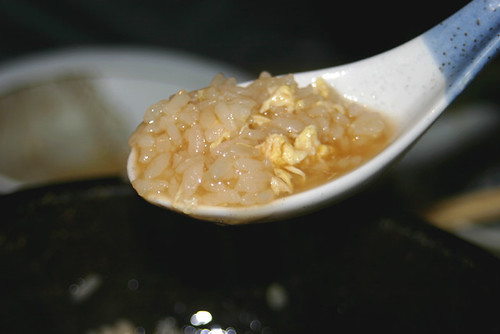
Once we finished the soup, they took the bowl back, filled it with rice and some more soup, and cooked it for a while with eggs for a
zousui (porridge) finish. The key player of this dish is each individual rice grain, soaking in a hot bath of the tasty broth with eggs as its only companion. I tried to highlight each grain in its unbroken, wholesome state, shinning proudly as the closing act for the meal.
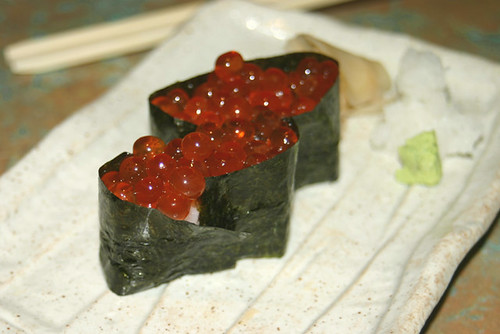
The true finale for my sushi visits, though, is always the ikura sushi. I can't go home without having a serving of ikura. Ikura is so beautiful - they are breath-taking in their deep glittery red, with a wonderful contrast against the black nori coat. This ikura sushi looks particularly intriguing, showing just a tad bit of its pale, white tenderness underneath the nori. This style of sushi is called a
gunkan-maki (battle ship roll), since the tight nori wrap resembles battleships. Not in this case. This one hardly looks like a battleship, but rather, has the coquettish look of a Japanese high school girl in her black, red, and white uniform... Oh, I better stop that line of description before the Papa Bear accuses me of being 'dirty' again...
That's my two cents on what I tried to convey with my pictures.

